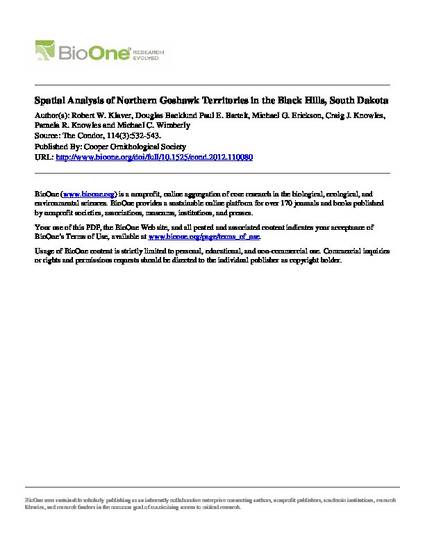
The Northern Goshawk (Accipiter gentilis) is the largest of the three North American species of Accipiter and is more closely associated with older forests than are the other species. Its reliance on older forests has resulted in concerns about its status, extensive research into its habitat relationships, and litigation. Our objective was to model the spatial patterns of goshawk territories in the Black Hills, South Dakota, to make inferences about the underlying processes. We used a modification of Ripley's K function that accounts for inhomogeneous intensity to determine whether territoriality or habitat determined the spacing of goshawks in the Black Hills, finding that habitat conditions rather than territoriality were the determining factor. A spatial model incorporating basal area of trees in a stand of forest, canopy cover, age of trees >23 cm in diameter, number of trees per hectare, and geographic coordinates provided good fit to the spatial patterns of territories. There was no indication of repulsion at close distances that would imply spacing was determined by territoriality. These findings contrast with those for the Kaibab Plateau, Arizona, where territoriality is an important limiting factor. Forest stands where the goshawk nested historically are now younger and have trees of smaller diameter, probably having been modified by logging, fire, and insects. These results have important implications for the goshawk's ecology in the Black Hills with respect to mortality, competition, forest fragmentation, and nest-territory protection.
Available at: http://works.bepress.com/robert-klaver/47/

This article is published as Klaver, Robert W., Douglas Backlund, Paul E. Bartelt, Michael G. Erickson, Craig J. Knowles, Pamela R. Knowles, and Michael C. Wimberly. "Spatial analysis of northern goshawk territories in the Black Hills, South Dakota." The Condor 114, no. 3 (2012): 532-543, doi: 10.1525/cond.2012.110080.